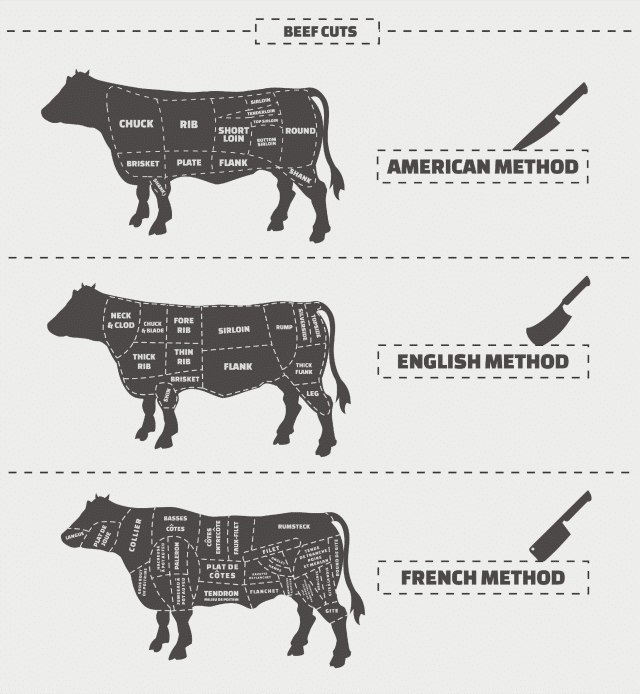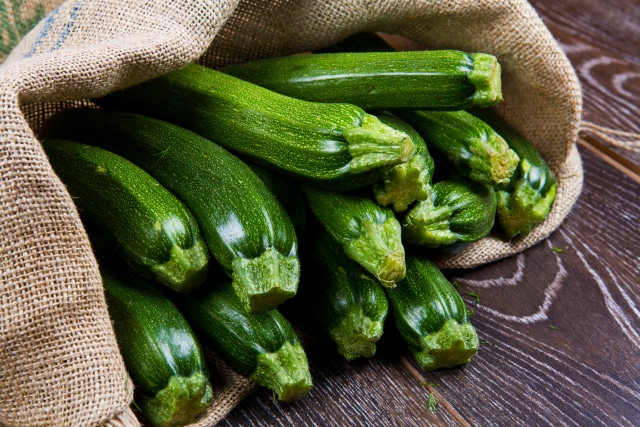Cheap Cuts of Meat – What to Buy and How to Cook it
This website may earn commissions from purchases made through links in this post.
Are you an omnivore? Save money on food by buying cheap cuts of meat. Here’s a guide showing what to cuts buy and how to best cook it.

In this last post in the series on cooking with frugal ingredients, we come to the most expensive part of the grocery budget (unless you’re vegan): meat.
I’ve written previously on how to save money on meat. To make the biggest savings, combine the tips from that article with the tips below.
This article focuses on what the cheap meat cuts are and the best ways to cook them.
You can read the rest of the articles in the series here:
What is the Cheapest Meat to Buy?
In Australia, the standard variety of meat you can commonly buy at the supermarket includes chicken, turkey, pork, beef, lamb, kangaroo and fish.
There are many things that affect the price of meat including location, sales, cut, season, farming conditions (drought), farming techniques (organic) demand, overseas trade, transportation, how processed the cut is is, how ‘convenient’ it is for the consumer (i.e., whether it’s chopped for you).
However, as a general guide, the cheapest meat per kilo is chicken, followed by fish, pork and beef, depending on cuts, with the cheapest cuts outlined below.
I’ve collated the meat available in Australia into a price table as a rough guide of cheapest meat to the most expensive.
This isn’t a scientific study by any means. I’ve looked up the price of meat at my local supermarket. So view the following table is a very rough snapshot of meat prices in one place at one time to give a general picture of the costs of different meats.
| Meat | Starting Price Per Kilo AU$* | Cheapest Cut^ |
| Chicken | $2.90 | Wings and Drums |
| Sausages | $5.00 | BBQ |
| Sardines | $6.00 | Tinned |
| Fresh fish | $6.80 | Fresh Mackerel Cutlets |
| Tuna | $7.00 | Tinned |
| Mussels | $8.00 | Frozen |
| Turkey | $8.00 | Drumsticks |
| Beef | $8.00 | Corned Beef |
| Pork | $8.00 | Ham on the Bone |
| Pork | $9.00 | Shoulder Roast |
| Pork | $10.00 | Bacon |
| Fish | $10.00 | Thawed Farmed |
| Beef | $11.00 | Mince |
| Kangaroo | $11.00 | Mince |
| Duck | $11.00 | Frozen Whole |
| Lamb | $12.00 | Shoulder Roast |
The good news is that studies are finding that the Mediterranean diet is one of the healthiest diets in the world.
While the diet emphasises lots of plant-based eating, when it comes to animal protein, fish and poultry come out on top. These also happen to be among the cheapest meats available per kilo.
It is recommended that red meats are eaten sparingly, making the eating plan good for both your health and your budget.
Cheap Meat Cuts and How to Cook Them
While expensive cuts are more tender than cheaper cuts, cheaper meat cuts tend to have more flavour. So cheaper cuts of meat are a win on two counts: cost and taste.
Because they are less tender, you need to cook the cheaper cuts differently. But that makes them perfect for your slow cooker, saving you time as well!
A grocery savings trifecta.
You might also like: How to Stretch Your Meat Budget by Using Meat as a Flavour Enhancer
Chicken
All cuts of chicken are cheap compared to beef, lamb and pork, but the cheapest of the chicken cuts are as follows.
Whole Chicken – Great for roasting and then using the bones to make your own stock. You can also cook your chook in the slow cooker or portion it yourself into smaller cuts.
Drumsticks – Roast, slow cook, braise or fry. Great for marinating.
Wings – Roast or fry. Another cut perfect for marinating. Honey-soy marinated wings are my go-to plate to bring to a BBQ.
Thighs – Roast, slow cook or pan fry or barbeque.
Tip: Check out turkey instead of chicken for cheap bird meat.
Pork
Shoulder – best slow roasted, slow-cooked or braised. Makes excellent pulled pork.
Beef
The different cuts of beef can be a bit confusing because there are so many names for the same cut of meat!
However, as a rule of thumb, the cheaper cuts are usually from the tougher muscles (like the shoulder or shin) and are best cooked long and slow.

Chuck / Blade / Shoulder – Best slow-cooked (think beef pie or casserole) or braised. The steaks can also be barbequed and pan fried but don’t overcook them otherwise they will dry out.
Brisket – Best slow-cooked, braised or smoked on the barbeque.
Silverside – Corned silverside is best poached. You can also get silverside roasts (not corned) that are cheaper than other roasts, which can be roasted or braised.
Shin (Gravy Beef) – Best slow-cooked or braised so a great cut for casseroles.
Skirt or Flank steak – Best cooked quickly on high heat in the pan, under the grill. This makes a great steak sandwich or you can marinate the steak for fajitas or stir fry. Minute steak is often the same as flank steak. Cook on a really hot grill or pan for just a minute for tender steak!
Lamb
Neck or Scrag – Best slow-cooked or braised. One of my all time favourite stews is this slow cooked lamb neck stew. Make sure you buy lamb neck chops.
Shoulder or Forequarter – Lamb shoulder is best slow-cooked, braised or slow roasted. Forequarter chops can be pan fried, barbequed, grilled (broiled), braised (as in Irish stew) and slow-cooked.
Shank – Not as cheap as it used to be (thanks, Master Chef!), but still a cheaper option. Best slow-cooked or braised.
Save Money on the Groceries eBook

For more ways to meal plan and save money on groceries, check out the eBook Plan Cook Save: How to Eat Well When Money is Tight and Time is Short.
*Learn how to set the right grocery budget for your circumstances.
*Find out the easiest and quickest way to reduce the grocery bill.
*Discover a meal planning strategy that will only take you a couple of minutes a week but will save you hours.
Other Forms of Cheap Animal Protein
Mince – Mince (beef, lamb, pork, chicken or wild meat like kangaroo) is both cheap and versatile. It can be pan-fried as is or formed into patties and fried, grilled (broiled), braised (think meatballs in tomato sauce), slow-cooked, barbecued or roasted.
Sausages – Cheap man’s meat, sausages can be pan fried, barbequed, grilled (broiled), roasted or braised or slow-cooked in a casserole.
Bacon – While you can definitely eat bacon as it is pan fried, grilled or roasted, because of its full flavour, it’s great as a flavour enhancer where a little goes a long way. Add a little to a vegetable pie, for instance, for a meaty flavour without a lot of meat.
Offal – Of all the meat products, offal is often the cheapest as well as the most nutritious, albeit an acquired taste. Check out this post on ways to eat offal.
Tinned fish – Tinned tuna and salmon are inexpensive pantry staples that can be added to pasta, made into casseroles or patties. Small fish like herring, sardines and kippers are high in Omega-3 and because they replenish quicker, are more sustainable to eat. Kippers on toast for breakfast is a great way to start the day.
Eggs – Eggs are a nutritious and cheap meat alternative. Eat them plain either fried, scrambled, poached, boiled or even baked, or serve them as an omelette, frittata or quiche.
Dairy – Dairy foods, especially hard cheese, cottage cheese and Greek yoghurt, are also a cheaper way to get protein, B12, zinc and a whole host of other nutrients.
You don’t need to stop eating meat entirely if you want to save money on the groceries, but it pays to get to know your cheap meat cuts and how to best cook them, so you can save while still eating meat.










